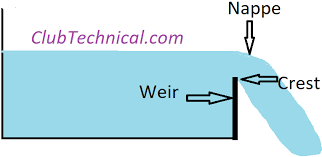M-sand properties , advantage and disadvantage
M-sand is manufactured sand produced from crushed hard rock, characterized by its cubical shape, consistency, and low impurities, which leads to stronger concrete. Key properties include a specific gravity of approximately 2.73, a rough surface texture, and controlled particle size distribution. Common tests for M-sand include those for particle size and distribution, shape, chemical composition, and its effect on mortar and concrete properties like strength, workability, and shrinkage.
M-sand properties
Source: Crushed hard
rocks like granite or basalt.
Particle Shape: Angular and
cubical with grounded edges, which provides better bonding with cement than
river sand.
Impurities: Free from
clay, silt, and other organic or soluble compounds, resulting in higher quality
concrete.
Particle Size: Typically ranges
from 75 to 475 microns, with the size distribution controlled during
manufacturing.
Specific Gravity: Varies
depending on the parent rock, but is generally around 2.73.
Surface Texture: Rough, which
enhances the bond with cement.
Bulk Density: Approximately
1.75 gm/cm³.
Common tests for M-sand
Particle Size and Distribution: A sieve
analysis test is performed to determine the gradation and ensure the sand meets
specific size requirements.
Shape and Texture: Microscopic
examination and other tests are used to check the shape and surface texture of
the particles.
Chemical Composition and pH: Tests are
conducted to check for any chemical properties or compounds that could
negatively affect cement or concrete.
Specific Gravity and Absorption: Determined to
understand the sand's density and its ability to absorb water.
Mortar and Concrete Tests:
Compressive and Flexural Strength: Tests are
conducted on mortar and concrete made with M-sand to evaluate its strength-giving
properties.
Workability: The flow or
consistency of the mortar or concrete is tested to assess ease of use.
Shrinkage: Measures the
reduction in volume of the concrete as it hardens.
Bond Strength: Evaluates how
well the mortar or concrete bonds with other materials.
Advantages of M Sand
1. Environmentally Friendly: M-Sand is a
sustainable substitute for river sand manufactured by crushing rugged rocks.
This mitigates the need for river sand mining, which can result in environmental
destruction, such as habitat loss and riverbank erosion.
2. Consistent Quality: M-Sand can be
generated with a uniform particle size and shape, providing compatible
construction materials and enhanced construction outcomes.
3. Higher Strength: It also
provides greater compressive and flexural strengths when utilized in concrete,
making it advantageous for high-strength concrete applications.
4. Cost-Effective: M-Sand can be more
economical in certain regions since it is locally obtainable and does not
necessitate long-distance transport.
5. Reduced Dependency on Natural Resources: Using M-Sand
additionally lessens reliance on natural river sand, a finite resource,
preserving it for future generations.
6. Controlled Gradation: M-Sand
production enables precise regulation over particle size distribution, making
it suitable for specific construction requirements.
7. Less Vulnerable to Shortages: It is also
less susceptible to scarcities as it can be manufactured throughout the year,
reducing the likelihood of sand deficits during peak construction periods.
Disadvantage of M Sand
1. Quality Variability: The quality
of M-Sand can vary among different manufacturers, which raises concerns about
its consistency and reliability. Proper quality control measures must be
implemented to ensure the sand meets the required standards.
2. Availability: However, in some
remote or rural areas, M-Sand may not be readily available, which necessitates
its transportation over long distances.
3. Initial Investment: The initial
investment required for setting up the machinery and infrastructure for M-Sand
production can be relatively expensive, which may dissuade some manufacturers
from entering the market.
4. Perception and Acceptance: Furthermore,
in certain regions, traditional river sand is preferred due to perceptions
about its quality, which can affect the acceptance of M-Sand.
5. Specific Application Requirements: Additionally,
M-Sand may not perform as well as river sand in some specialized applications,
such as plastering, mainly due to differences in texture and fineness.
6. Washing Requirement: Some types of
M-Sand may also require washing to remove impurities, which can add to the
production process and cost.
7. Lack of Geological Diversity: Finally, it’s
worth considering that M-Sand is mainly produced from hard rocks like granite,
which limits the geological diversity of available sands compared to river
sands, which can vary in mineral composition.




Comments
Post a Comment